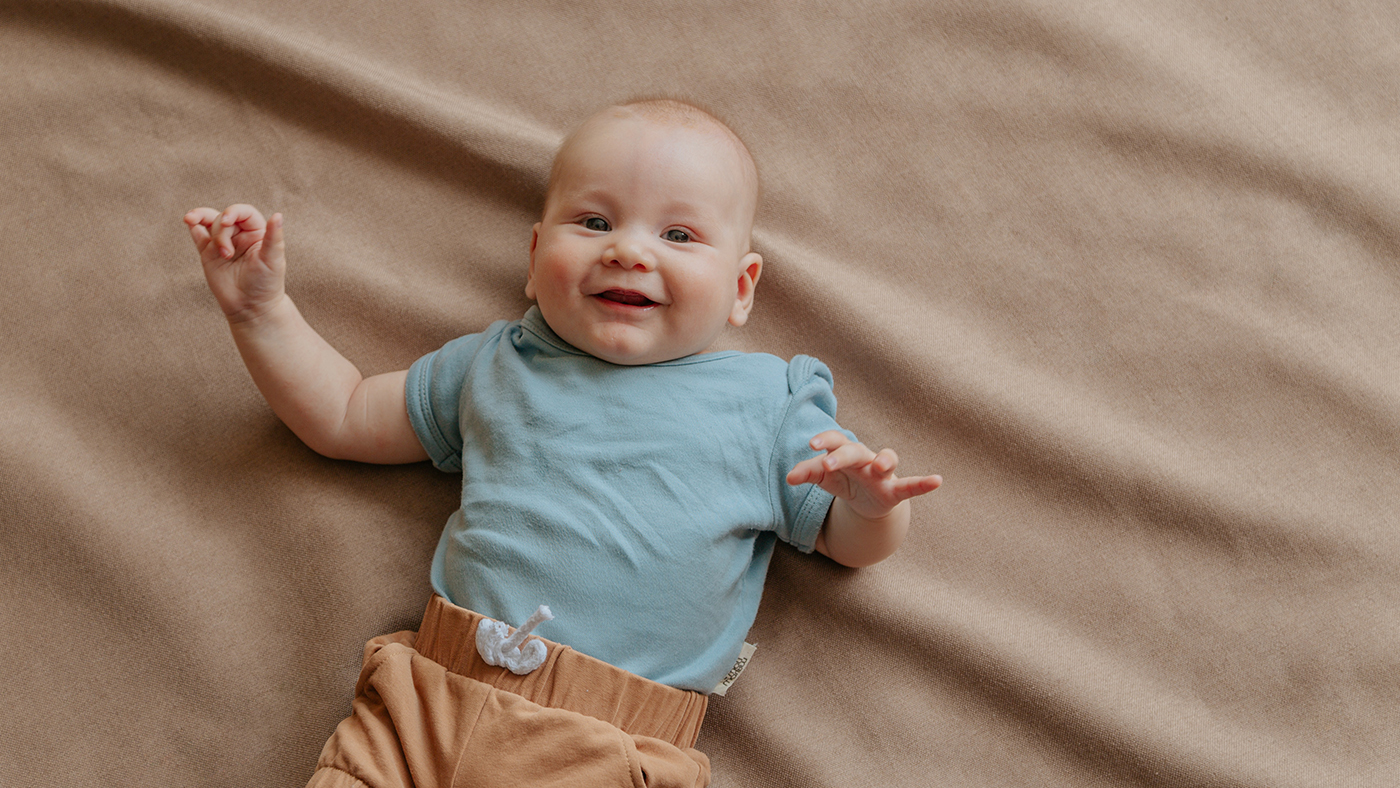A closer look at when, if and how your baby copies what they see and hear

Your baby will have been watching you as you speak to them and as you move around, they have noticed the gestures that you use and the words that you say. They have been exploring the sounds they can make and developing their movements. You might have seen them moving their mouth in different ways and perhaps moving their hands and fingers.
Now, they will begin to copy your sounds and movements. At first, they might not have the physical skills to do this accurately but you might notice that they are beginning to try to copy sounds and gestures.
Is imitation learnt?
For many years, there was a view that newborn babies could copy facial expressions and gestures; this view was established following a study that was carried out in the late 1970s.
However, researchers had questions about how the study was carried out, and when another study was designed and undertaken to see if newborn babies imitated these expressions, the results of the 1970s study could not be replicated.[1]
Response or copying?
It seems very young babies stick out their tongue when they are excited. So, maybe the babies in the initial study were not copying the adult, but were responding with excitement to seeing them.
These more recent findings suggest that your baby learns to imitate movements and sounds through social interaction rather than being born with the ability to imitate.[2]
Your baby will have been interested in the people around them since they were born, and as you have spoken, sung to and smiled at them, they will have been watching and learning about your movements.
Whether innate or learnt through interaction, imitation is important for learning
While recent studies suggest your baby will not imitate movements from the point they're born, the importance of imitation for their learning is not being questioned. The discussion among researchers is connected to if the capacity to imitate is present from birth or learnt by spending time with people.[2]
What scientists agree about is that imitation is an important part of your baby’s learning. Imitation will support your baby’s social and emotional development as it is a step towards being able to understand that other people have different perspectives.
It will support the development of language as your baby listens to and watches you as you speak and uses this information to explore the sounds that they can make.
Imitation is also an important part of cognitive development. Not only does your baby begin to develop their memory to copy things sometime after seeing them, they also watch your actions and how you use objects, and copy you in order to learn about them and what they can do with different things.
The benefits of copying each other
Your baby will be interested in what is happening around them, will watch what you do and listen to what you say. When playing, they might start to watch how you use an object and then copy what you have done. As they begin to babble, they might be encouraged to do this more if you copy the sounds that they make.
Your baby will learn from their exploration of objects and also from watching how you and the other people around them play with and use things. So, the more you show your baby what you're doing, and talk about it as you go along, the more they will be taking it all in!
References:
[1] Oostenbroek J, Suddendorf T, Nielsen M, Redshaw J, Kennedy-Costantini S, Davis J, Slaughter V (2016). Comprehensive longitudinal study challenges the existence of neonatal imitation in humans. Current Biology, 26, 1334–1338.
[2] Heyes (2016). Imitation not in our genes. Current biology. 26 R408-R431. Available at: Imitation: Not in Our Genes | Elsevier Enhanced Reader (Accessed 5th October 2021).